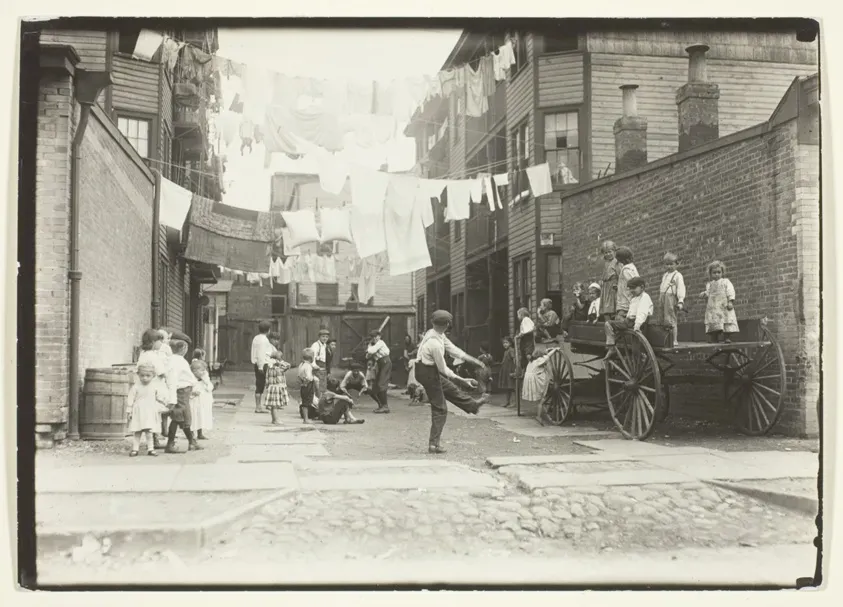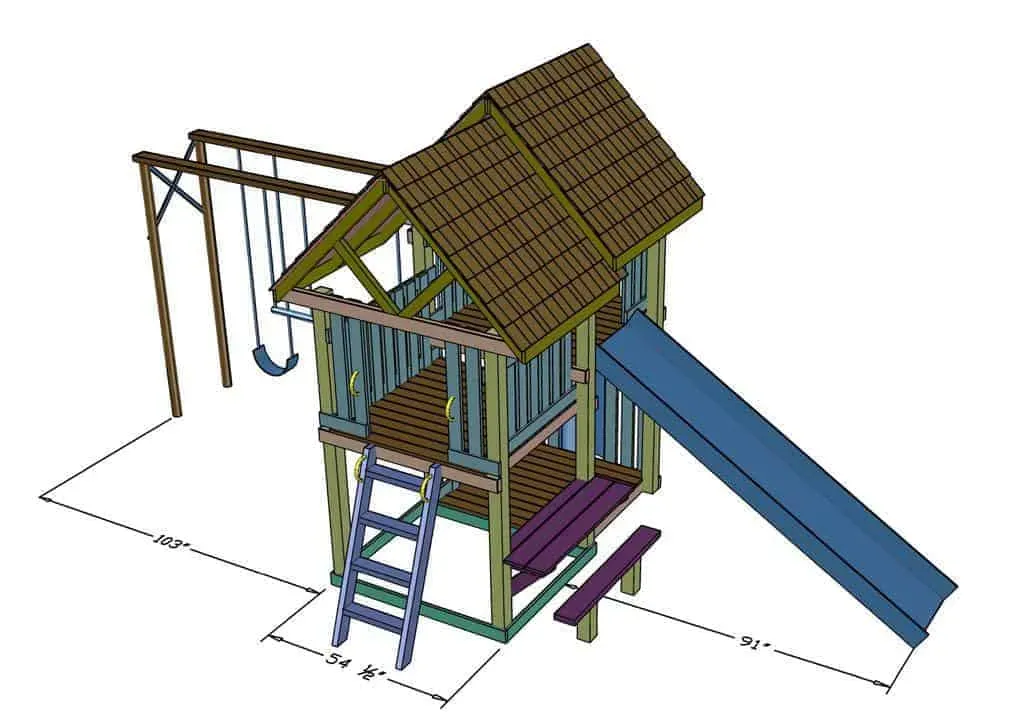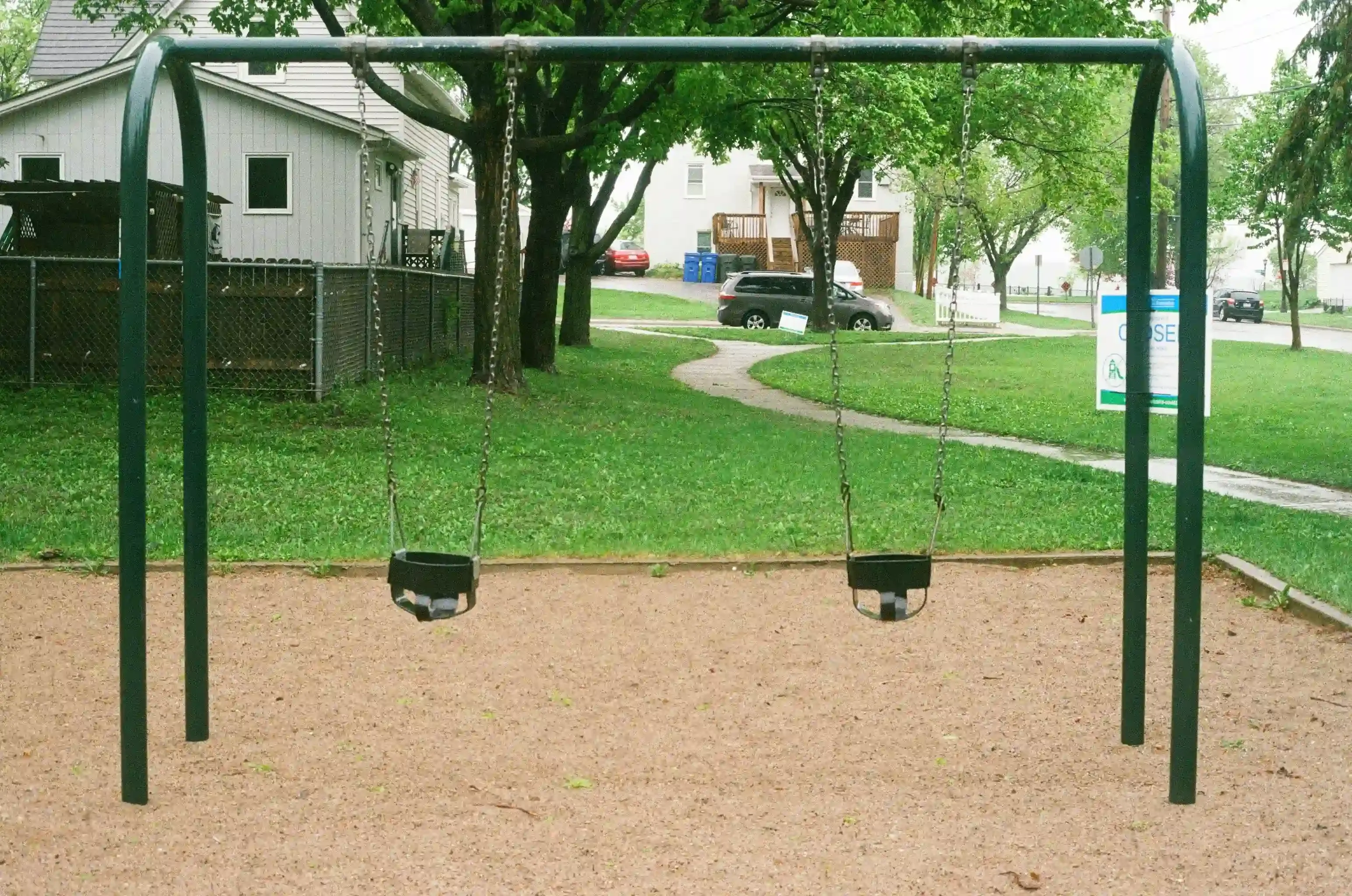Table of Contents
Let's face it, those pre-built plastic castles and metal swing sets at the big box stores come with sticker shock. And sometimes, they just don't fit your yard, your kids' specific brand of energy, or your aesthetic. Maybe you've eyed your backyard and thought, "My kids need a place to burn off that extra, bouncy, wall-climbing energy," but the idea of building something sturdy feels daunting. That's where solid backyard playground equipment plans come in. Forget vague notions and wandering trips to the hardware store hoping inspiration strikes. We're going to cut through the noise and show you how finding the right plans makes building a safe, fun, and genuinely cool play space achievable. This isn't about throwing some lumber together; it's about creating a structure that lasts, using guides that actually make sense. We'll walk through why building is often smarter than buying, how to pick plans that suit your situation, what gear and materials you'll actually need (not just a wish list), and the practical steps to turn those blueprints into a playground your kids might actually prefer over screen time. ( maybe that last part is a slight exaggeration, but we can hope, right?).
Why Build with Backyard Playground Equipment Plans?

Why Build with Backyard Playground Equipment Plans?
Saving Your Wallet (and Your Sanity)
Let's talk money first. Those pre-fab play structures? They cost a bundle. Like, a *serious* bundle. When you use backyard playground equipment plans, you're buying raw materials – lumber, hardware, maybe a slide or swings – which is almost always cheaper than buying a finished product. You cut out the middleman, the factory assembly costs, and the massive markup. Plus, you can phase the project if needed, buying materials as your budget allows. It’s a practical way to get more bang for your buck, leaving you with extra cash for, you know, snacks for the tiny humans who will actually *use* the thing.
Building for Built-to-Last Quality
Have you ever poked around one of those store-bought playsets? Sometimes the lumber feels thin, the hardware looks flimsy, and you wonder if it'll survive a single enthusiastic summer. When you follow solid backyard playground equipment plans, you choose the materials. You can opt for thicker, more durable lumber, like pressure-treated pine or cedar, designed to withstand the elements. You select the hardware, ensuring it's robust and corrosion-resistant. You control the construction process, making sure every joint is secure and every bolt is tightened correctly. This isn't just about saving money; it's about building something that feels substantial, something that will last for years, potentially through multiple kids and countless hours of jumping, swinging, and climbing.
- Lower material costs compared to pre-built sets
- Ability to choose higher quality, more durable wood
- Control over hardware quality and installation
- Potential for a longer-lasting structure
- Freedom to customize features as you build
Creating a Custom Fit for Your Family and Yard
Every backyard is different. Some are narrow, some are sloped, some have awkward trees or fences. Store-bought playsets are designed for a generic space, often requiring significant yard prep to make them fit. Using backyard playground equipment plans lets you tailor the build to *your* specific situation. Need to fit a corner? There are plans for that. Want to incorporate a natural slope into a climbing wall? Possible with the right design. Beyond just the physical space, you can customize the features based on your kids' ages and interests. More swings? A rock wall instead of monkey bars? A taller deck for a bigger slide? Plans offer a roadmap, but you can often tweak elements to create a truly unique play area that perfectly suits your family's needs and your yard's quirks. It's like getting a bespoke suit instead of off-the-rack jeans – it just fits better.
Choosing the Best Backyard Playground Equipment Plans for Your Space

Choosing the Best Backyard Playground Equipment Plans for Your Space
Assessing Your Needs (and Your Kids' Wild Energy)
Alright, so you're sold on building. Great! Now, before you dive headfirst into downloading the first set of backyard playground equipment plans you find, let's hit the brakes for a second. What do your kids *actually* need? Are they tiny tots who need low platforms and baby swings, or are they older climbers who crave height and challenging obstacles? How many kids will typically be using it? A simple swing set is one thing, a full-blown fort with multiple slides and a monkey bar setup is another. Think about their current age and maybe what they'll be into in a couple of years. Building is an investment of time and money, so picking plans that grow with them a bit is smart. Also, take a good look at your yard. Measure the space you're willing to dedicate. Are there slopes? Trees? Underground pipes you need to avoid? Knowing these things upfront will save you a ton of headaches down the road and narrow down the type of backyard playground equipment plans that are even feasible.
Finding Plans That Fit Your Skill Level and Budget
Not all backyard playground equipment plans are created equal, especially when it comes to complexity. Some are super basic, perfect for a weekend warrior with minimal tools and experience. Others are elaborate, multi-level structures that require more advanced woodworking skills, specific tools like a miter saw or router, and a bigger budget for materials. Be honest with yourself about your DIY comfort level. Starting with something too complicated can lead to frustration, wasted materials, and maybe an unfinished project that just sits there, judging you. Look for plans that clearly state the required skill level and provide a detailed material list with estimated costs. This helps you budget accurately and avoid nasty surprises halfway through the build.
- Simple swing sets
- Basic forts with a slide
- More complex multi-level playhouses
- Playsets with rock walls or monkey bars
- Treehouse designs (often more advanced)
What to Look for in Quality Plans
Once you've got a handle on your needs and skill, it's time to actually look at backyard playground equipment plans. What makes a good set of plans? First, they should be clear and easy to follow. Look for detailed diagrams, step-by-step instructions, and a complete cut list for lumber. A good plan will also include safety considerations, like recommended hardware types, spacing between components, and suggested ground cover. Some plans even offer 3D models or videos, which can be incredibly helpful for visualizing the build. Don't just grab the first free plan you see; take a few minutes to review it. Does it make sense? Are the instructions logical? Does it look sturdy? A little bit of vetting here can prevent a lot of head-scratching (or worse, instability) later.
Gathering What You Need: Tools and Materials for Your Build

Gathering What You Need: Tools and Materials for Your Build
Stocking Your DIY Arsenal
Alright, so you've picked your backyard playground equipment plans – hopefully, ones that didn't look like they were drawn on a napkin. Now comes the fun part (or the slightly intimidating part, depending on your current tool collection): gathering everything you'll need. Your plans should have a detailed material list, which is your shopping guide for lumber, bolts, screws, washers, and maybe specific hardware like swing hangers or slide mounting brackets. Don't skimp here; using the right fasteners is crucial for safety. You'll also need a basic set of tools. Think measuring tape, a good quality saw (circular saw or miter saw will save you a ton of time), a drill/driver with various bits, a level, a socket wrench set, clamps, and maybe some sawhorses. Safety gear is non-negotiable: safety glasses, work gloves, and hearing protection, especially when cutting wood. Trying to build this beast with a dull handsaw and no eye protection is a fast track to frustration or, worse, a trip to the emergency room. Trust me, a little prep on the tool and material front makes the whole building process smoother and much safer.
Putting the Plans into Action: Constructing Your Playground

Putting the Plans into Action: Constructing Your Playground
Breaking Ground and Cutting Lumber
plans in hand, lumber delivered, tools charged up. Time to actually build the thing based on your backyard playground equipment plans. First step? Site prep. Clear the area completely. We're talking rocks, roots, that weird patch of mud that never dries. Leveling the site is absolutely critical unless your plans specifically account for a slope (and most standard ones don't). You don't want a playset that leans like the Tower of Pisa; that's a safety hazard waiting to happen. Once the ground is ready, it's time to start cutting. Follow your cut list precisely. Measure twice, cut once – that's not just a cheesy saying, it prevents expensive mistakes and frustrating trips back to the lumber yard. Use your saw safely, keep fingers away from blades, and wear those safety glasses. Cutting all your pieces first, sometimes called "pre-cutting," can make assembly much smoother, almost like putting together giant, heavy LEGOs.
Assembly: Slow and Steady Wins the Race
With your pieces cut, you move onto assembly. This is where those detailed diagrams in your backyard playground equipment plans become your best friend. Follow the steps sequentially. Trying to jump ahead or guess can lead to parts not fitting later, requiring frustrating disassembly. Use the hardware specified in the plans – bolts, lag screws, and structural screws where indicated. Don't substitute with basic deck screws if the plan calls for something stronger; this is literally holding up your kids' play structure. Check for squareness and plumb as you go with your level. A slightly crooked wall might not seem like a big deal initially, but it can throw off everything that comes after it, from attaching the roof to hanging the swings. Work with a helper if possible, especially when lifting longer or heavier pieces. It makes the job faster and significantly reduces the chance of dropping something on your foot (ask me how I know).
- Clear and level the build site thoroughly.
- Measure lumber precisely and follow the cut list.
- Wear safety glasses and gloves when cutting and assembling.
- Follow assembly steps in order from your plans.
- Use the specified hardware types and sizes.
- Check for square and plumb frequently during assembly.
- Work with a partner for lifting and securing large components.
Building It Real: The Final Swing
So there you have it. Tackling a backyard playground with equipment plans isn't a weekend miracle cure for kid boredom, but it is a concrete way to build something substantial. You've seen why starting with a plan beats guessing, how to pick one that won't make you pull your hair out, the actual stuff you'll need, and the basic steps to getting it off the ground. It takes effort, sawdust, maybe a few re-reads of the instructions, and definitely a trip or two back to the hardware store. But when it's done, it's yours, built to spec, and hopefully, sturdy enough to handle years of bouncing, swinging, and the occasional sibling squabble. Better than another plastic fortress destined for the curb in five years, right?